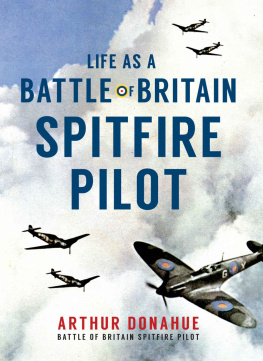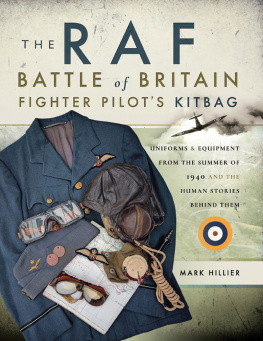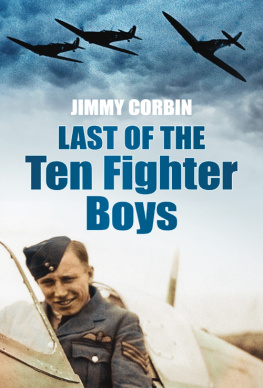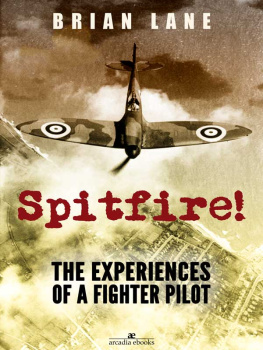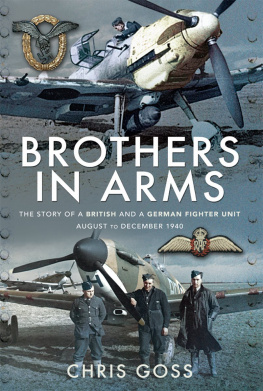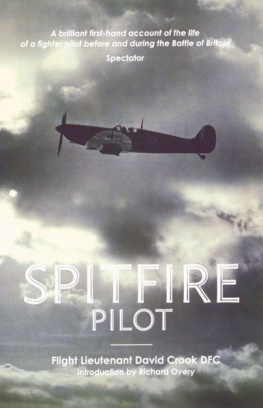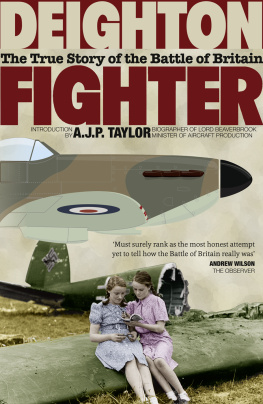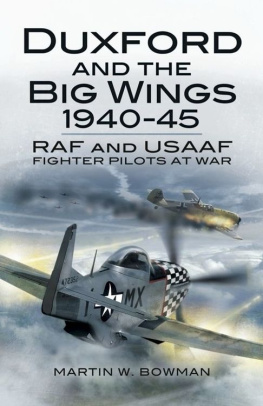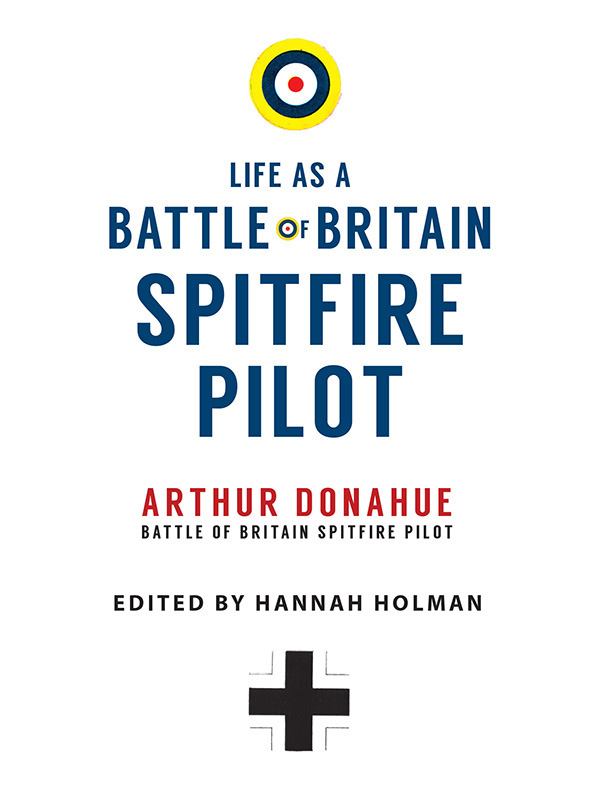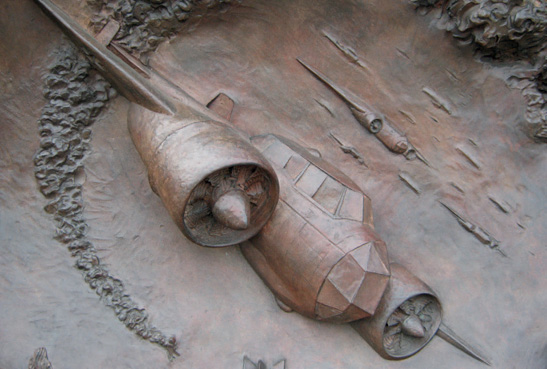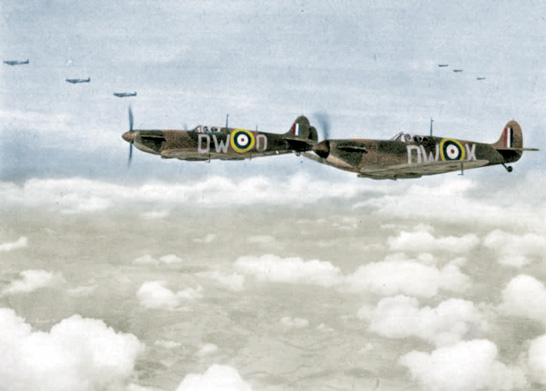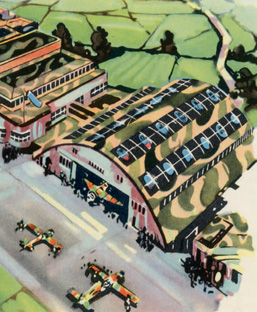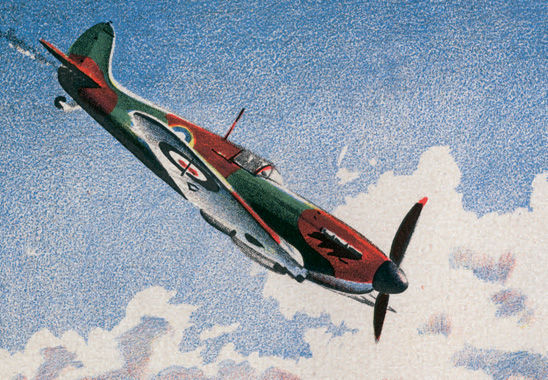2. The Dornier 17 Flying Pencil bomber.
The right of Hannah Holman to be identified as the Author of this work has been asserted in accordance with the Copyrights, Designs and Patents Act 1988.
All rights reserved. No part of this book may be reprinted or reproduced or utilised in any form or by any electronic, mechanical or other means, now known or hereafter invented, including photocopying and recording, or in any information storage or retrieval system, without the permission in writing from the Publishers.
British Library Cataloguing in Publication Data.
A catalogue record for this book is available from the British Library.
Typesetting by Amberley Publishing.
Printed in Great Britain.
3. Hurricane pilots from 249 Squadron RAF North Weald (11 Group), 21 September 1940.
GLOSSARY
Astern Behind or towards the rear of an aircraft.
Bandits Enemy aircraft.
Blitzkrieg German for lightning war, a method of warfare typified by the Nazis in 1939 and 1940 as they stormed through Europe, whereby an attacking force is spearheaded by a dense concentration of armoured and mechanised infantry formations, and heavily backed up by close air support.
Control The control or controller was the ground-based officer who (together with a team of support staff) gathered up intelligence from the radar station and the observer corps reports on where and how high formations of enemy aircraft were in the skies approaching Britain and predicted where they were heading. They relayed instructions via the R/T to the fighter pilots in the air, directing them to where the formations of enemy aircraft could be found and attacked.
11 Group See Fighter Command. The group responsible for the defence of south-east England and London, the principal battlefield of the Battle of Britain.
Fighter Command The RAF organisation commanded by Hugh Dowding that ran RAFs fighter squadrons. Its headquarters was at Bentley Priory, at Stanmore, Middlesex. It was subdivided into four groups, each responsible for the aerial defence of a geographical region of Great Britain.
Flight A military grouping of six aircraft. An RAF fighter squadron is usually split into two flights, A and B. They are commanded by a flight lieutenant. A flight is usually split into sections of three aircraft each, named after a colour.
Hun/Jerry/Boche Contemporary slang for Germans.
Mae West Slang for the pneumatic life jackets worn by fighter pilots in the event of having to bail out over the Channel. Mae West was a big-busted film star of the 1930s. It was an appropriate name when you see what they do to a pilots contours.
Readiness There were various levels of readiness. Essentially it was how ready a pilot had to be to jump in his fighter and take off. Readiness meant to be able to take off within three minutes; stand-by meant sitting in the cockpit ready to start the engine and go; available meant able to take off within fifteen minutes.
R/T Radio telephone, used by pilots to communicate with their fellow pilots and ground staff.
Section See flight.
Squadron A military unit in an air force comprising a number of aircraft, its aircrew and support staff. In the RAF in 1940 a fighter squadron was made up of twelve to eighteen aircraft. At the beginning of the Battle of Britain, Fighter Command had forty-four squadrons of Hurricanes and Spitfires.
Tally-ho Originated as a call in fox hunting when a rider sees a fox; it was a term used by fighter pilots over their R/T to let their fellow pilots know that they were going into attack.
4. Spitfires in flight over Kent, July 1940.
1
1940 TRAINING & FIRST FLIGHT IN A SPITFIRE
My school was one of many such that are known as Operational Training Units. At these places newly trained pilots are given their final brushing up and actual experience in flying the latest fighter planes under the guidance of experienced fighter pilots who teach them the newest tactics. In addition, experienced pilots who have been doing other kinds of flying and want to become fighter pilots, as well as pilots from other air forces, receive the same training in order to learn British fighting tactics and the behaviour of fighting planes. There were many Polish pilots and a few Belgians at this place undergoing training.
The visiting pilots who come here are not welcome, and everything is done to hide the aerodrome from them. Hangars, shops, offices and even driveways and roads are camouflaged, as well as vehicles themselves. All are painted in crazy wavy combinations of dull greens, greys, browns and black, so designed that at great altitudes the aerodrome merges in with the countryside and can scarcely be seen.
Most impressive of all to me was the grim, dull colouring of the airplanes themselves. They were painted dull green and brown in the wavy pattern, except the undersides, which were grey. Concession is made even in the national markings, which for British planes consist of a red bulls eye surrounded by concentric white and blue rings. On the top side of the wings this is altered by omitting the white ring, because that is too conspicuous from above, so there is just a larger red bulls eye and a wider blue ring around it. The Spitfire fighting planes have a peculiarly shaped wing, very wide and tapered in such a way that it resembles the wings of some moths. The round, red-and-blue marking near each tip enhances this resemblance so much that the planes themselves look like giant moths from above.
5. Aerodrome with camouflaged hangers, 1940 period illustration.
6. Spitfire in flight, 1940s period illustration.
The entire aerodrome bristled with sandbags, trenches, dugouts, and machine-gun and anti-aircraft emplacements.
A building known as the officers mess is provided for officers at aerodromes and other military stations in England. This usually contains a dining room, bar, billiard room, and a large, comfortable lounge. Here the officers spend most of their leisure time, and the officers mess is a large part of their life. The building may or may not contain quarters for the officers as well. At this station it did not, and we roomed in other buildings. Each officer has the services of a batman, or valet, who takes care of his room, makes his bed, presses his uniform, polishes his buttons, wakens him in the morning and in general makes himself useful. This was all quite strange to me, and I went to bed pondering on the many strange things I must get used to in fighting the Huns.

